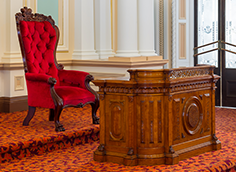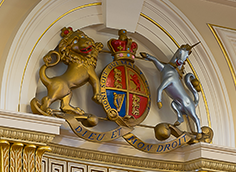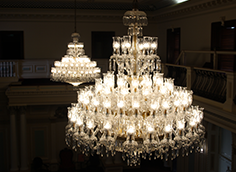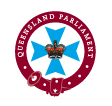-
Visit and learn
- Message from the Speaker
- About Us
-
Visitors
- Free Guided Tour
- School Excursion
-
Take a look inside Parliament House
- Porte-cochere
- lobby and grand staircase
- Legislative Council Chamber
- Members' Reading Room
- President's balcony
- Legislative Assembly Chamber
- Ministers' Room
- O'Donovan Library
- Bernays Room
- Cellar
- Lucinda Bar
- Strangers' Dining Room
- Billiards Room
- Speakers Rooms
- Clerks Office
- Strong Rooms
- The Presidents Room
- Speaker's Green
- Speaker's Dining Room
- Premier's and Speaker's Halls
- Undumbi Room
- Dandiir Room
- Green Deck
- River Deck
- Visitors with Guide, Hearing or Assistance animals
- COVID 19 Response
- Visit the Public Gallery
- Visit our Gift Shop
- Have Your Say
- Get Involved
- Education and Learning
- History
- Heritage Collections
- Preservation of our Heritage
- Regional Sittings
- CPA Australia and Pacific Regional Conference
- Publications and Reports
- Speakers' Corner
- Opening of the 58th Parliament
- Parliamentary Annexe Reparation and Refurbishment
- Contact Us
Commonly known as the Red Chamber, it is a grand room featuring striking red carpet, ornate coffered ceilings and two Waterford crystal chandeliers. It is now used for ceremonial and formal occasions, such as the opening of a new parliament, Estimates committee hearings, private seminars and even the occasional opera performance. Remnants of its official use, including the presidents chair and desk and the British Royal Coat of Arms still remain today.
You can read more about the abolition of the Upper House here.
POINTS OF INTEREST:

PRESIDENT’S CHAIR
The President’s Chair, situated at the head of the Chamber, is reserved for the Sovereign or the Sovereign’s representative in Queensland, the Governor. Carved from red cedar and cushioned in red velvet, the chair’s status is symbolized through a carved royal crown on the top rail and lions-paw feet.
It is believed the chair was built by local colonial cabinet-maker, James Bryden, and was used at the very first sitting of Parliament in 1860.

COAT OF ARMS
The British Royal Coat of Arms above the chair signifies the connection of royalty with Westminster Upper Houses. It contains the mottos: “Dieu et Mon Droit” (which translated from French means ‘God and My Right’) and “Honi Soit Qui Mal y Pense” (which translated from Old French or the Anglo-Norman language means ‘Shame be to him who thinks evil of it’).

CHANDELIERS
During restorations conducted in the 1980s, two chandeliers and matching wall sconces were purchased from the Waterford Crystal company in Ireland for $70,000.
The annual maintenance of the chandeliers can take up to two weeks and involves the cleaning and checking of every piece of crystal by hand.
The Black Rod symbolises the traditional, but now defunct, office of Queensland's Usher of the Black Rod.
Measuring 1.37 metres in length, the Black Rod is topped with a golden crown and the Royal Coat of Arms of the United Kingdom. The Black Rod was used in the Queensland Parliament only during the life of the Legislative Council from 1860 to 1922. Colonel Charles Gray was Queensland’s first Usher of the Black Rod, as well as the Parliamentary Librarian (18 May 1860 – 27 January 1861).
The parliamentary position of the Usher of the Black Rod, an officer who maintained order in the upper house of a parliament, dates from the fourteenth century in England.
Historically, the Usher of the Black Rod was an officer in a British order of knights called the Most Noble Order of the Garter, and was appointed to serve the monarch in the British House of Lords. The name ‘Usher of the Black Rod’ comes from the staff (or sceptre) which was an ebony staff topped with a gold lion and represented the authority of the office. The staff was used by officers to arrest or expel anyone who offended the Order.
The equivalent position to the Speaker in the upper house, the President of the Legislative Council, was abolished in 1922, as was the Clerk of the Legislative Council and Usher of the Black Rod. The Usher of the Black Rod was drawn from Westminster traditions where the position was a personal appointment of the Crown whose job was to act as a messenger and escort the Monarch when visiting the Parliament—including knocking on the door of the lower chamber to summons representatives.
Queensland’s black rod, unused since 1922, is preserved in a glass case in the foyer between the two chambers but has no formal use.
